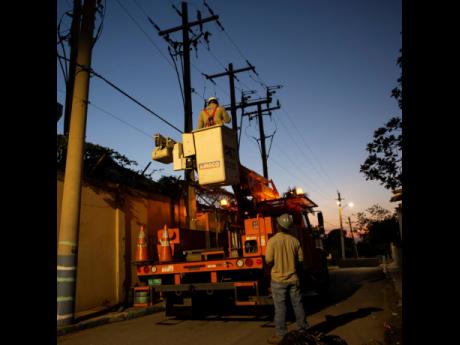HOSPITAL CHAOS - Power surges rock KPH, VJH, crippling machinery, destroying equipment, and threatening surgeries
Power surges attributed to the Jamaica Public Service Company (JPS) have repeatedly plunged the island’s major public hospital into darkness, crippling equipment, endangering surgeries, and shutting down elevators, officials have revealed.
Wentworth Charles could scarcely contain his anger at Kingston Public Hospital (KPH) yesterday evening. He was fuming because of the frequent loss of electricity at KPH and Victoria Jubilee, Jamaica’s only maternity hospital.
The chaos was evident even in the middle of the interview. For a moment, the entire compound was in darkness. No movement. Not a sound.
It seemed a regular occurrence.
“See what we are talking about,” someone said, in pitch darkness.
Charles, the chairman of the South East Regional Health Authority (SEHRA), which has oversight for 15 hospitals in Kingston, St Andrew, and St Catherine, was called to the hospital after another suspected surge in electricity from JPS forced KPH and VJH to shut down elevators, forced doctors to devise Plan B in surgeries, and left the hospitals in sweltering heat.
“Since about 3 p.m., the electricity went and the hospital is running on generators. This has happened several times in the last three months, and we have had to write to the company. We will be writing again, and this time, we are going with the bill for the damaged equipment as soon as the audit is completed.
“JPS is going to have to pay for the damage to the costly equipment, which has been hit by power surges from the company,” a seething Charles told The Gleaner last night.
Everybody is complaining about the frequency of the power outages, Charles added.
“Transformers have been blown on our premises and outside of premises. We have had damage to several pieces of high-end equipment in the hospital. We have had numerous bulbs blown, and only last week, we put in $1.5 million worth of bulbs because the entire car park and other areas were dark, because of oversupply of electricity,” he stated.
According to the SERHA chairman, the Government has spent more than $400 million to replace and repair equipment at the two hospitals.
The telephone numbers to the facility were not working at 6:30 when the power supply returned.
High velocity X-ray machines, patient monitors, and other medical equipment have regularly come to a standstill.
Senior medical officer at KPH, Dr Natalie Whylie, could not hide her frustration.
“It’s a very difficult situation, all round. There is danger to life. We are about saving lives. There is also danger to property. Everything gets delayed, the waiting time is increased, and we get the blame,” she sighed.
Dr Hugh Roberts was in the middle of surgery when the power supply went Wednesday evening.
“I was in the middle of surgery, and instead of doing it with the small cuts with the machinery – because of the loss of blood supply to the equipment in theatre – we had to convert to the bigger-cut procedure and using my head,” he told The Gleaner.
“It has happened before, but today (Wednesday) is the worst we have had. The patient is asleep, so you have not only the surgical problem, which is what we are conducting, but under the care of anaesthetist. The anaesthetic machine also needs power, and even though there is a battery supply, we don’t know how long the power is going to go away,” he added.
Even with power back-up, there is still chaos.
“So even though we got power storage, whether there is low voltage load shedding, so therefore power will come back for about three minutes, then it is gone completely. Then it comes back, and then it’s gone again. It means that all equipment can be damaged,” he explained.
Machinery to stop bleeding is also susceptible to damage, he said.
Jareth Daley, director of operations and maintenance at SEHRA, said that a surge arrestor in the transformer was damaged.
“It is on the high-voltage side, which means the power from JPS is too much. So the power is dissipated through the arrestor. It is designed to do that. It is a high-voltage facility and we step it down using transformers on our internal plant,” he explained.
“It’s damaging the equipment because they are sensitive,” he told The Gleaner.
Acting chief executive officer of KPH, Kathleen Cooper-Brown, said the elevators at VJH are high consumers of electricity and have been decommissioned when hit by voltage surges.
“When that happens, we have to mobilise our resources so that pregnant women can be assisted manually. Sometimes that means someone carrying them up the stairs,” she told The Gleaner last night.


